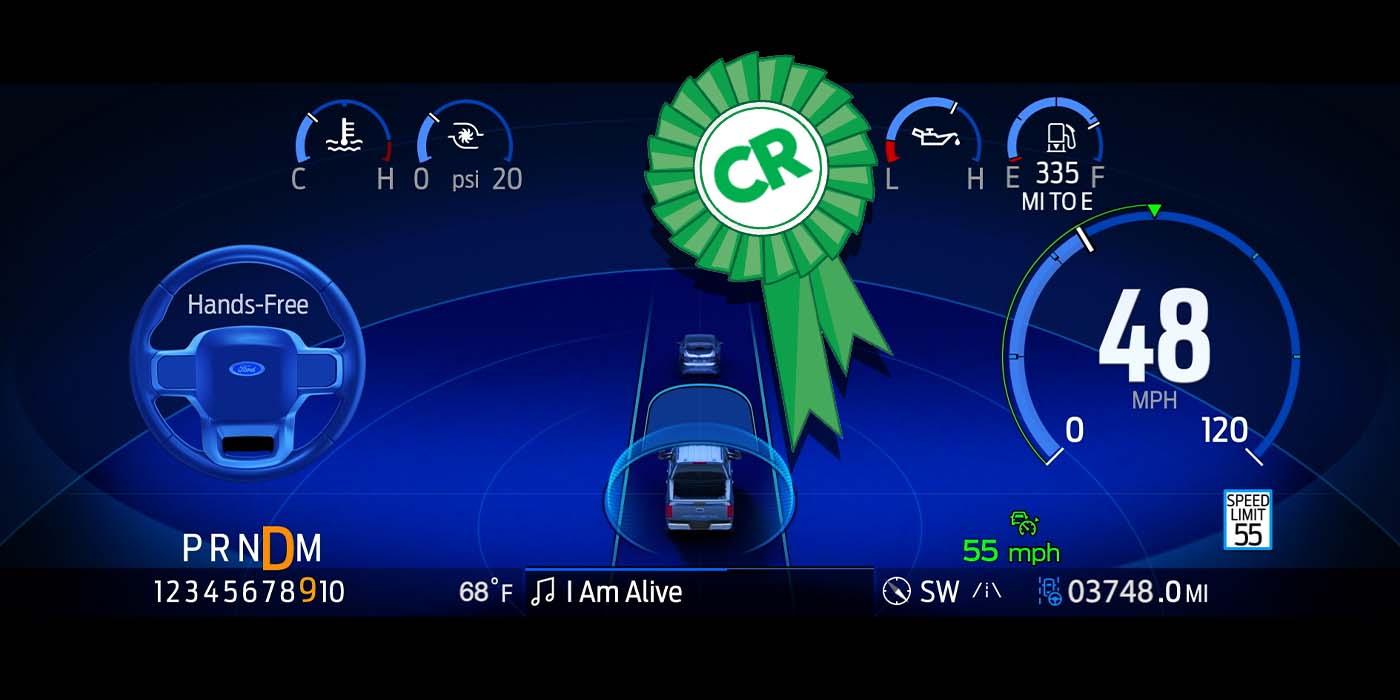
Consumer Reports has released its latest rankings comparing the active driving assistance systems (ADAS) of EV automakers like Ford, GM, Rivian, and of course Tesla. The independent, non-profit consumer organization tested 12 different ADA systems broken down into five distinct categories in which it determined that Ford’s BlueCruise technology is the current industry leader, usurping General Motors’ Super Cruise. Tesla’s Autopilot, on the other hand, has tumbled off the podium into mediocrity.
The CR rankings released this morning are comprised of months of vehicle testing from Ford, Hyundai Motor Group, Tesla, and even our friends over at Toyota. As you’ll see below, not all ADAS are created equal.
At it’s core, the technology is a bolstered form of adaptive cruise control (ACC), that combines computer control of a vehicle’s brakes and acceleration with lane centering assistance (LCA) that also helps keep the vehicle a preset distance away from others in your lane.
No matter what flavor Kool-Aid you choose to drink, full self-driving technology still feels perpetually two years away (ask Elon Musk). In the meantime, however, some automakers on the list below have developed some truly impressive technology as the bridge between fully-attentive driving and not doing anything at all.
This sort of collaborative driving style may not be yet like an episode of The Jetsons, but it is still a marvel to experience in person and is becoming more and more common in passenger vehicles. According to CR’s data, ADA systems are already available on more than 50% of 2023 model-year vehicles – whether it’s an add-on or a standard feature.
Let’s start with the rankings and go from there to explain how Ford nabbed the top spot and Tesla fell to middle of the pack. Have a look.
Ford and GM top ADAS rankings, Tesla stumbles
Consumer Reports explained that to determine this list, it put each of the 12 ADAS through laps around its own track in Connecticut, plus a 50-mile loop on public roads throughout late 2022. Per the report:
Each system was rated for its performance in 40 separate tests, such as steering the car, controlling the speed, and keeping the driver safe and engaged with the act of driving. Additional features such as automatic lane changes or reacting for traffic lights were not evaluated in this test.
CR testers evaluated the way each of the 12 systems performed within five specific categories: capability and performance, keeping the driver engaged, ease of use, clear when safe to use, and unresponsive driver.
In the latest rankings, Ford’s BlueCruise ADAS claimed the top spot over the previous leader in GM’s Super Cruise while Tesla, whose Autopilot sat in second place in 2020, dropped all the way to seventh. Consumer Reports explained that Ford and GM are leading the current pack because their systems also utilize direct driver monitoring systems (DDMS). These additional systems require drivers to keep their eyes on the road while the ADAS is activated, using infrared cameras on the driver’s face to alert them if they stop paying attention to the road.
Most other systems on this list have not yet integrated DDMS and simply require occasional hand pressure on the steering wheel to at least give the impression that the driver is paying attention. We’ve seen Tesla drivers share creative but utterly dangerous loopholes in Autopilot’s steering wheel requirement, rigging their EV to be “hands free.” The American automaker has since integrated the detection of cheating devices, but its driver monitoring leaves much to be desired. At least according to Consumer Reports, who has criticized the technology for years.
Top comment by Jacob Larsen
We have 2 model 3s. I have full self-driving beta and my wife just as auto-pilot (not even enhanced AutoPilot). I paid $5k for FSD in 2019. If I could get $5k back to remove FSD, I would. That should tell you something. AP is good enough. FSD is sometimes cool, but it's not really great. I mostly have given up using it because it's too unpredictable.
I would like to try Ford and GM's advance driver assistance system because Tesla's requiring manual torque from my hands every few seconds is very annoying, and sometimes dangerous. I can have my hands on the wheel and be looking perfectly forward and the car will still start that incessant blue blinking waiting for me to jiggle the steering wheel. I've gotten used to it, but it would be SO much better if I could just leave my hands off the wheel and the system could make sure I am following with my eyes. In my view, the touched based version is indeed inferior to a system that tracks eye/attention. I think Consumer Reports got it right with this.
The CR team pointed out that systems in both Tesla and Mercedes-Benz vehicles allowed highway driving for approximately 30 seconds before any audible warning was given to retake the wheel. The testing team stated that amount of time time equates to over half a mile of driving without hands on the wheel and without successfully ensuring the driver is even looking at the road.
The rankings display that Ford’s BlueCruise technology is newer and more technologically advanced than everyone else, including Tesla – whose Autopilot technology has seen added features, but has kept the same basic functionality since day one. CR’s senior director of auto testing Jake Fisher elaborated:
After all this time, Autopilot still doesn’t allow collaborative steering and doesn’t have an effective driver monitoring system. While other automakers have evolved their ACC and LCA systems, Tesla has simply fallen behind.
We were surprised to see Volvo ranked 11th out of 12, considering passenger safety is a huge selling point in its overall brand. The automaker has promised to deliver one of the safest EVs on the planet when its upcoming EX90 hits the market, so perhaps its ADAS will see some improvements as well. We already know it will have advanced driver monitoring and will be able to safely stop the vehicle should you become unconscious.
Ford, Tesla, and GM drivers, what do you think about these rankings?
FTC: We use income earning auto affiliate links. More.
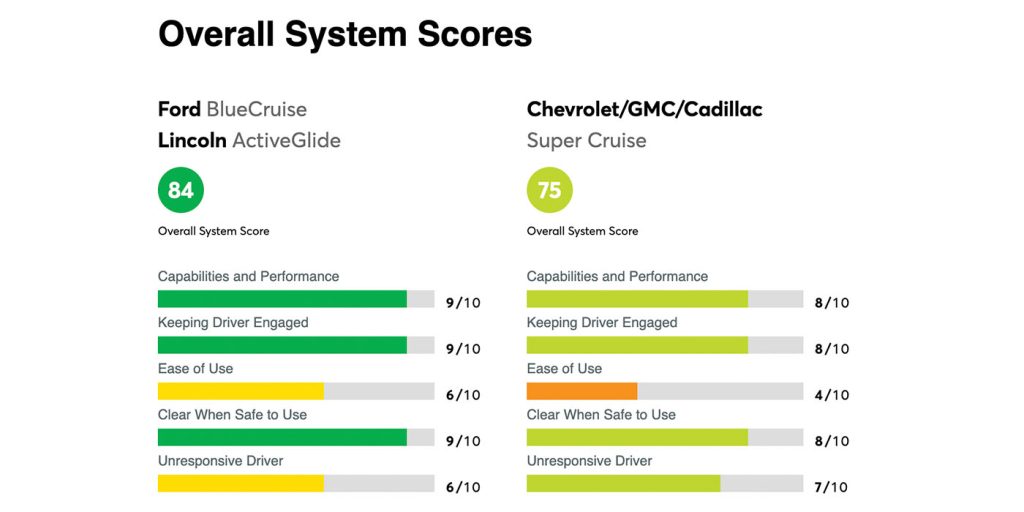
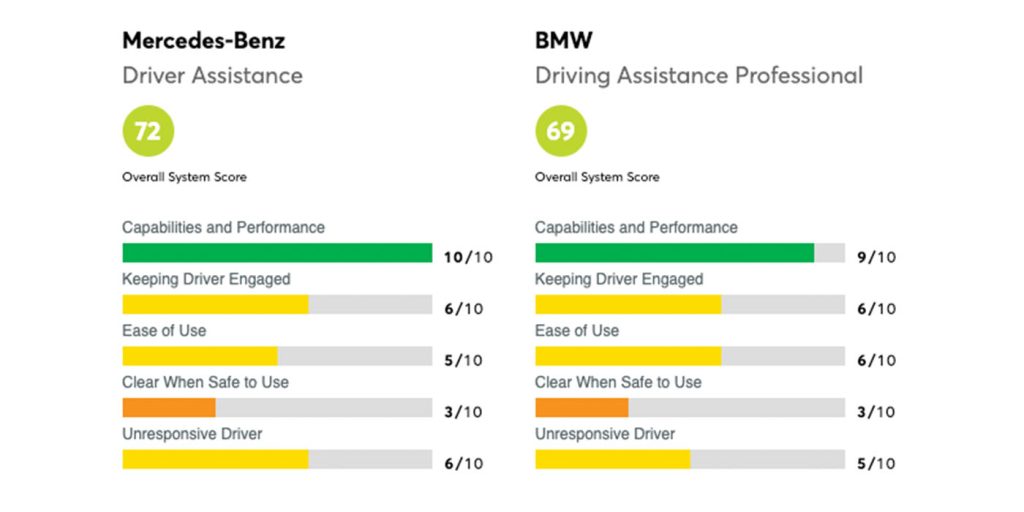
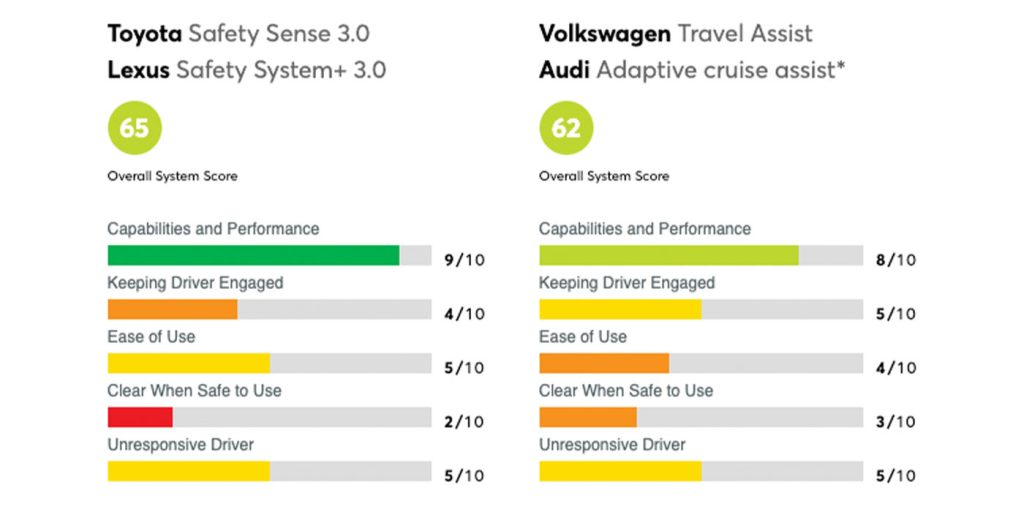

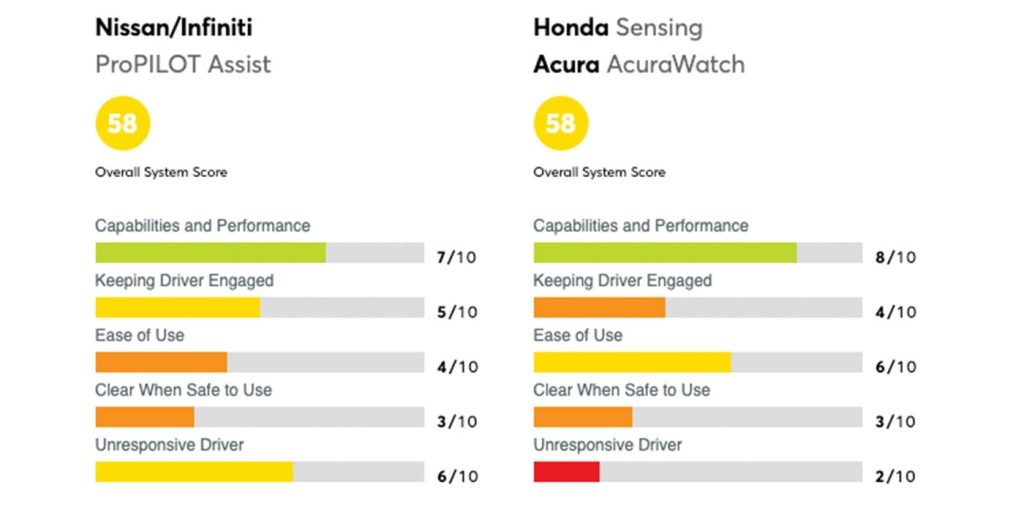





Comments